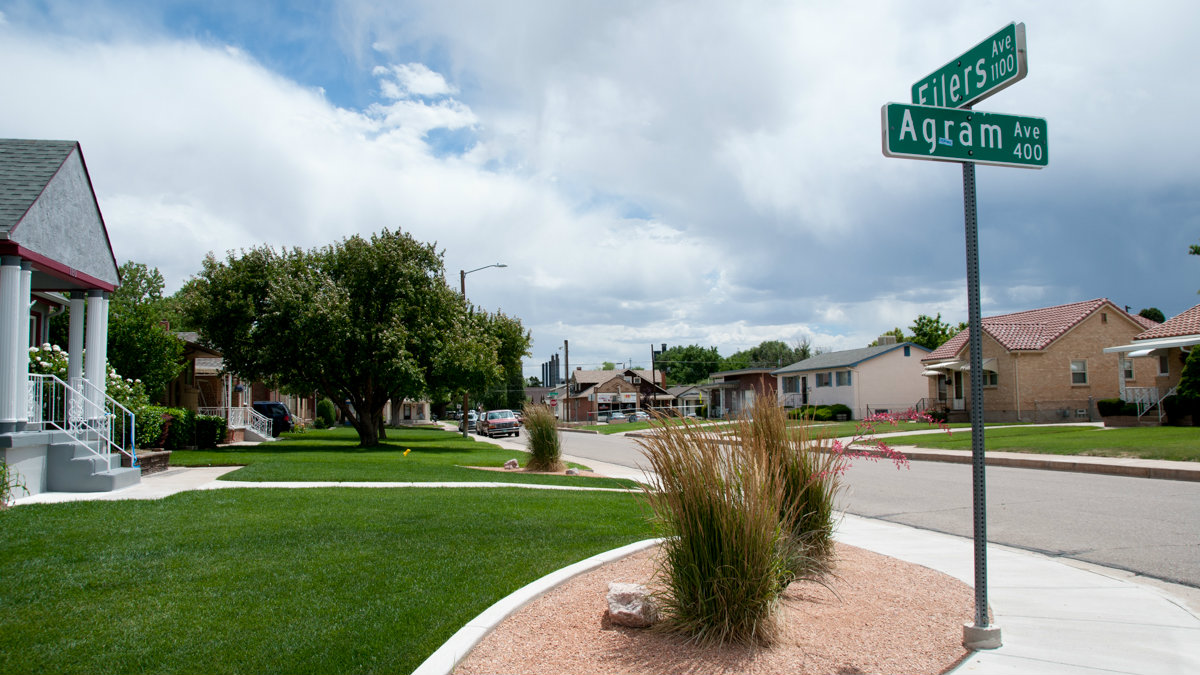
Part of a small neighborhood of modest mid-century homes in Pueblo could become a national historic district. Old Bojon Town is known for the Slovenian steelworkers who lived there while they worked in the nearby mill.
Joe Kocman says not much has changed since he was a kid growing up in this neighborhood in the 1950s. Most of the one-story brick homes on his block, with their well-kept green lawns, still belong to the families who originally built them following World War II.
Around the corner from Kocman’s block, behind the old St. Mary’s School, is an area overgrown with trees and shrubs. It’s the site of the former Colorado smelter that closed in 1908. Kocman says he and his friends thought of the site as a playground: “we were down there every day playing.”
In 1923, the smelter’s huge smokestack came down and the community got involved in moving the bricks.
"The church gave the kids and the families a penny a brick to clean the bricks that were used in the school building," Kocman says. The old parish school that Kocman attended was built from the bricks of the smelter.
The EPA listed the old smelter area as a potential Superfund site earlier this year because of lead and arsenic left from the operation. Proposed construction on Interstate Highway 25 could also threaten homes on the edge of the Old Bojon Town neighborhood.
These two issues prompted residents to form a neighborhood association. At the same time, Pueblo City Planner Wade Broadhead asked if the property owners in the area would be interested in becoming a historic district.
"I’d talked to people and met Pam and Joe Kocman and realized it was an incredible living historic neighborhood,” Broadhead says.
In most neighborhoods, Broadhead says the people who created the neighborhood are long gone. So he was surprised by the number of original owners that are still around.
The neighborhood association joined with the city and a local historic preservation group to hire a consultant to survey the neighborhood.
Lead researcher Mary Therese Anstey says this was a different kind of project than she’s worked on in the past. “We haven’t had a lot of designations either here in Colorado or nationwide of what you would call working class post-World War II homes and this is definitely a working class area,” Anstey says.
Anstey gathered stories from the people who live there and who remember much of the area’s history. Their stories added depth that doesn’t usually appear in these kinds of surveys.
Examples of those stories include the one Kocman tells, when he looks east, across one of the main roads through Old Bojon Town. That area was all prairie when his mother was a child.
“Those houses weren’t built in the early 1900s,” Kocman says. “They weren’t built until the post ‘21 flood. So if you were going over there to see somebody you were saying 'Mom I’m going to the prairie to see Eddie.' "
In 1933, Kocman’s grandmother opened Eiler’s Place, the neighborhood bar. It’s across the street from the church and the school and it still remains a popular neighborhood hangout.
The bar has stayed in the family for four generations: Kocman and his wife Pam ran Eiler’s Place for 15 years before selling it to two of Kocman’s cousins in 2006.
Pam Kocman didn’t grow up in Bojon Town, but she has stories to tell. She says in the old days, families sent their kids to the bar with empty lard buckets.
“It would be 25 cents to fill up the lard bucket with beer because the lard would knock down the foam,” she says. The tap beer, she explains, foamed more in those days so using the lard buckets meant families got more beer.
Tradition and history are plentiful and strong at this bar -- and in the mid-century homes that make up Old Bojon Town.
The potential national historic district includes the block of homes where the Kocmans live and the area around the school, church and bar. The recent historic survey is a step toward getting the designation.
Joe Kocman is undecided about whether the historic designation is a good idea because of potential local restrictions. But Pam Kocman says the survey is a reason for the residents of Old Bojon Town to take pride in their neighborhood.
“It is really at the cornerstone of the revitalization of this neighborhood,” she says.
It’ll be up to the individual property owners like the Kocmans to decide if they want to be a part of a national historic designation.








